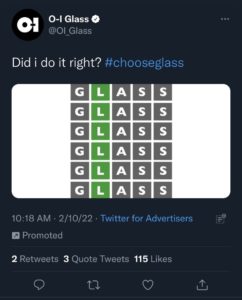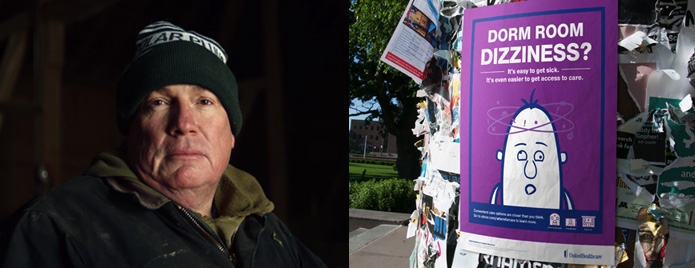This week’s key points:
- What is Wordle?
- The success of the game and how those tactics can be used to promote your brand
- Social trends go out quickly, and The New York Times acquisition could be fueling its demise
- Try out our CCF Wordle game at the bottom of this page!
Why are my co-workers sending me green, yellow, and black squares? What does 246 4/6 mean? If you’re asking yourself these questions, you’re late to the newest trend that has taken over the lives of millions of people: Wordle.

Skip this section if you’re familiar with Wordle
Wordle is a daily word game that was created by Josh Wardle in October 2021 for his wife due to her love of word games. Once a day, players attempt to figure out the daily 5-letter word in just six tries. With each guess, the game indicates which letters are correct, in the wrong spot, or incorrect. Once complete, you can share your results with friends, family, co-workers, or your entire social media following. The shareable grid shows your Wordle journey without exposing the words that were used, so people can view your results without being spoiled the Wordle of the day.
What exactly is making Wordle popular?
The seemingly simple game had 90 players on November 1, 2021. By the second week in January 2022, it had over 2 million players. At CCF, we’re inspired by large scale behavior changes like these, but what made Wordle so successful? Let’s take a look at what tactics worked.
Scarce, but available
The principle of scarcity is based on the idea that people place a higher value on items that are limited; however, the scarcity must be proven in order to be an effective method. In terms of Wordle, the creator has successfully created an addictive game because you can only play once a day, but players can still play every day. The scarcity of the game is perfectly balanced.
The large “limited time offer” banner in the window of a store is compelling because it appears special. Similarly, we understand limited edition collaborations between our favorite brands to be attractive because there are so few items available.
Competition brings us together
Wordle was built on human connection, and that’s exactly what the competitive, problem-solving element of the game has delivered. The daily 5-letter word is the same for all 8 billion people on the planet, which is an incredibly powerful way to bring people together. Through the ability to share your Wordle journey, players have created group chats with friends, family, and co-workers to share their results – we’ve dedicated a Slack channel to post our daily scores! People are also posting their results on their social media feeds to display to the world. Since the share feature does not spoil the word of the day, people are able to compare their results with each other.
Wordle is kind of magical in how it’s bringing humans together in an age where technology can have the opposite effect. It might not be quite the same but your brand can also put authentic human connection at the center of its marketing efforts.

It’s meme-able
The grid’s air of mystery and playable scarcity merged to create heavy buzz around the game. The tell-tale sign
of success is social media buzz, especially memes. People want to be in the know and memes provide an easy way to join the conversation through content creation. The most common Wordle meme that is spreading is “not wordle, but” in which people use the game’s grid aspect to create funny comparisons from fried rice to the nostalgia of high school readings. People are finding various ways to join in on the Wordle conversation and create entertaining content. Even major brands are finally joining in. I was served this ad on twitter while writing this very article.
The rise and fall
When Wordle was acquired by The New York Times at the beginning of the month for roughly $1 million, it was met with skepticism from the game’s fans. Now there are even questions of whether The New York Times is ruining Wordle.
The social discussion of Wordle has become increasingly negative: players based in the UK feel disadvantaged due to the American spelling, the double-answer fiasco that happened a week ago, and an overall dissatisfaction with the daily answers. The negative reactions to Wordle may be inevitable since every trend eventually hits its peak.
Despite this, America’s obsession with gaming continues. In 2021, The New York Times Games “were played more than 500 million times” despite living behind a separate-from-the-newspaper paywall. It’s clear that audiences are willing to pay for daily games, and with big name platforms like the Times, advertisers can look to place ads within these games.
You know your business, we know the trends. Let’s talk.
Hot tip: We like to use a word with an ‘H’ in it for our first guess on Wordle, because that eliminates words with TH CH or SH in them. Try it out with our own CCF Wordle!
Thanks for reading, and we’ll see you for the next installment of Media Trends Monday! Have a great week.



